Description
(1/4-oz) about 2800 Seeds HAKUREI Japanese Hybrid Turnip seeds; a.k.a. SALAD TURNIP; Kitazawa #327; Brassica rapa var rapifera; 白嶺蕪菁かぶ This outstanding Japanese turnip has an excellent sweet and mild flavor that makes it a favorite salad ingredient. The slightly flattened round roots are crisp and white. The smooth, dark green tops can be eaten as well. The texture of the flesh stays smooth as it matures. The plants tolerate cool temperatures and mature early. Cool season annual Maturity: Approx. 25-45 days depending on type of maturity Planting season: Early spring/late summer/early fall Germination rate 95%; tested 10/2020; Seeds are packaged in ziplock poly. Like all turnips, the Hakurei, or Tokyo, turnip is a member of the Brassica family. This Japanese variety is sometimes referred to as a salad turnip, due to its crisp, delicious raw flavor. Unlike other turnip varieties, hakurei do not need to be cooked. They have an even-textured density and the flavor pairs well with a variety of different food items. Eat them raw (just whole, or chopped/grated in salads), make a quick pickle, or cook with their greens to enhance their natural sweetness. STORING & COOKING INFORMATION Handling: Wash and peel the turnip root. Turnips should not be overcooked, or they will become dark in color and strong in flavor. The summer turnip, when sliced, can be cooked in thirty minutes, the winter turnip in from forty-five to sixty minutes. Storing: Turnips should be stored unwashed in plastic bag in hydrator drawer of the refrigerator. Store greens separately wrapped in damp towel or plastic bag – use them as soon as possible. Freezing: Freeze turnips in cubes or fully cooked and mashed. Cut off tops, wash and peel. Cut in cubes to blanch or in large chunks to cook and mash before freezing. Cubes blanch in 2 minutes. To mash, cook in boiling water until tender. Drain, mash or sieve. Cool. Leave ½ inch headroom for either. CULTIVATION BLOG: I planted 1/16-oz of Hakurei turnip seeds around late August 2020 here in Chicago SW burb zone 5B. Harvested them from late Sep all the way until late Nov, as hard frosts did no harm to the roots but some leaves had minor frost burns after many 20F nights. The mature roots are mostly golf ball size for the larger ones, while the smaller ones are about half the size of larger ones. No need to peel the roots and it is pretty easy to rinse off any dirt on the root surface. I pickled the leaves and roots separately, or used them in stir fry or ramen soup.

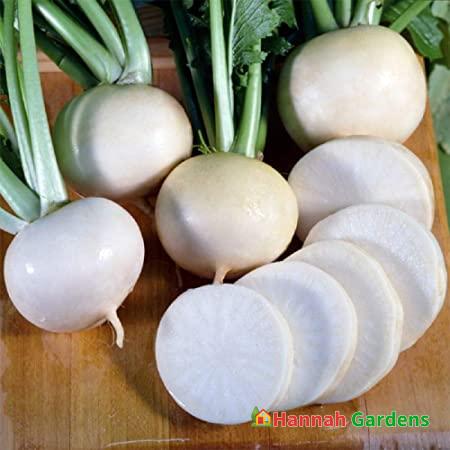
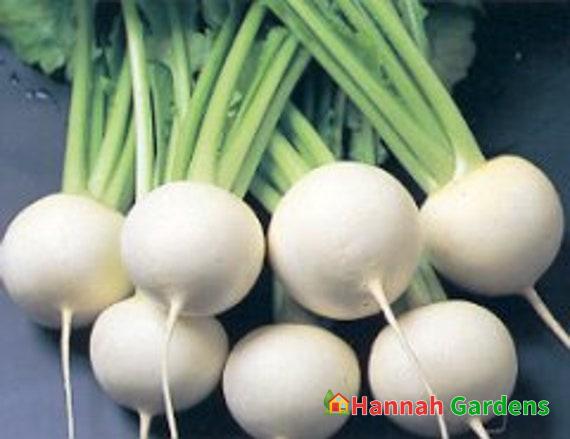
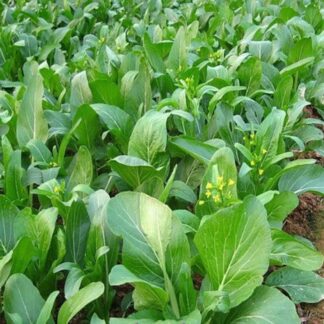
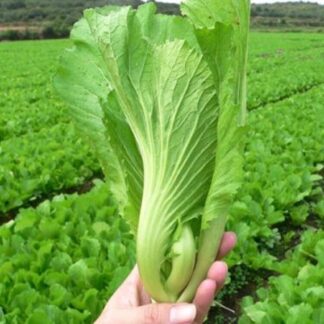
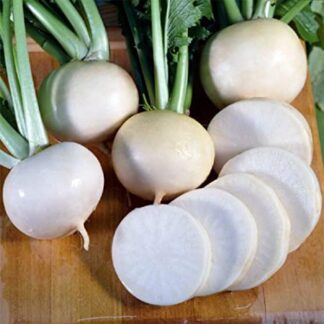
Reviews
There are no reviews yet.